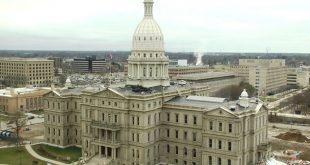The United States Census Bureau has warned state officials to not expect the population tallies for the 2020 cycle until September 30th, significantly later than March when the 2010 data was delivered. Thanks to a requirement of the Michigan Constitution, that means redistricting may not be done in time for next year’s election. The process is mandated to be finished by November 1st with a 45-day period for public input. That shifts the completion date to September 17th, two weeks before the information used to redraw maps will be available.
At the federal level, Michigan is expected to lose one congressional district, dropping from fourteen to thirteen. That shouldn’t affect the Upper Peninsula. Given the static number of 435 representatives for the country, each region is now roughly 755,000 people. That is over twice the UP’s total population, so it will remain entirely within the state’s First Congressional District, with a growing amount of the northern Lower Peninsula included.

Huge changes could be coming for the 110th State House District, though. It currently encompasses Keweenaw, Houghton, Baraga, Ontonagon, Gogebic, and Iron Counties, as well as Ishpeming and Powell Townships in Marquette County. The map is a bit more flexible at the state level. Each district is supposed to have a population between 77,000 and 91,000 residents. An examination of 2019 Census Bureau estimates shows the headcount within current boundaries falling well short of that threshold.

If the 110th ends up adding parts of northwestern Marquette County to compensate, that could potentially make it significantly more competitive. Republican Greg Markkanen won the 2020 election by roughly 11 percent, but the new territory would consist of Democratic leaning constituencies. Probably not enough to swing the 110th blue, but it might end up close enough to be interesting. By the same token, the neighboring 109th could trend more conservative with different boundaries. The process can’t happen without the data, though.
 Keweenaw Report Your Source for Local News and Sports
Keweenaw Report Your Source for Local News and Sports





